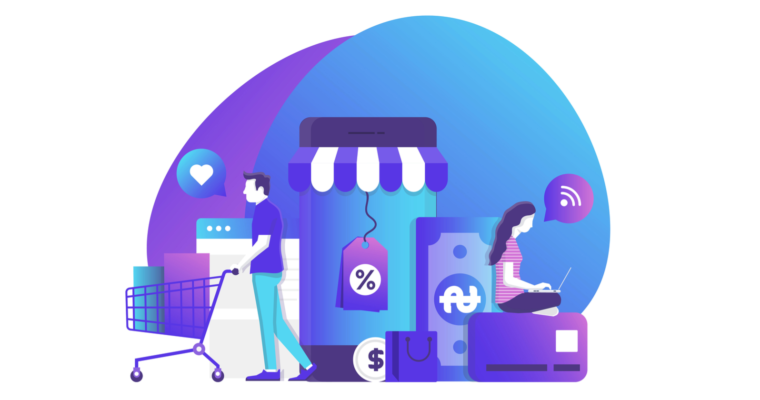Introduction to Ecommerce for Beginners
Category: Business | Posted date: 2019-10-04 06:13:07 | Updated date: 2019-10-22 05:23:06 | Posted by:

What Is Ecommerce?
Ecommerce, also known as electronic commerce, is a business model which involves transactions taking place on the internet. Stores that sell their products online are what we called ecommerce stores. For instance, Amazon.com is one of the most well known stores in the ecommerce industry. In this article you will learn the history of ecommerce, ecommerce statistics, platforms, popular ecommerce sites and more.
History of Ecommerce
In 1979, the foundation for ecommerce was created by Michael Aldrich. He used his telephone line to connect his television to a computer. While it was unlike ecommerce as we know it today, his idea started the idea of shopping without going to the physical store. At the time, most people don’t have computers. Bill Gates and Steve Jobs popularized computer for the average person. Bill Gates even stated that his goal was to put “a computer on every desk and in every home.” Without computers, ecommerce would be remarkably different.
Jeff Bezos founded Amazon in 1994 as an online store, selling over one million different books at launch. Amazon would eventually become the most popular online store for people to buy any products online.
By the mid-1990s and early 2000s, people were adding computers to their home and paving the way for the growth of ecommerce. Companies were accepting checks in the early to mid-1990s as there wasn’t an online payment gateway to transfer money from consumers to businesses. When Paypal was founded in December 1998, it made shopping online easier as credit cards were easily accepted.
By 2008, ecommerce sales made up 3.4% of all sales that shows industry growth. In 2014, it was estimated that there was around 12-24 million online stores all over the world.
What Is an Ecommerce Platform?
An ecommerce platform is a software solution that lets businesses to create online stores. In these online stores, businesses can sell their products or services to people across the world, utilizing delivery services to transport products to customers. Shopify, BigCommerce and Magento are some examples of ecommerce platform.
What Makes an Ecommerce Store Successful?
Running an ecommerce store is not that easy. Just having a store and some stock to sell doesn’t mean that customer will go and buy your products. There are things you can do to ensure the success of your store.
- Focus on the User: With ecommerce, you can sell anything to anyone anywhere, but you must be careful to know what you have to do to make those customers trust you to buy a product from you. Pick the right website theme, choose the correct branding and tone of voice for your copy, and keep your focus on only one or two target audiences so you won’t get overwhelmed.
- Test with Friends: Use your friends as your test subjects and have them run through the purchase steps to ensure that everything flows perfectly. You wouldn’t want the checkout process to be too long that makes customer leave before they even finish their purchase.
- Be Mobile Optimized: Make sure that customers can buy using their mobile and desktop devices. More and more mobile is growing in every industry so keeping on top of this trend is paramount to the success of your ecommerce store.
- Invest in SEO and PPC: SEO and PPC drive traffic to your store so missing out on them will slow down the success of your website. Find a good consultant or agency if you have the budget and watch as sales come easily.
- Research and Develop: Never be content with what you do, make research of new products and ways on how to sell them. You won’t need to restock your ecommerce store every month. Try to attract the attention of your customer through innovative ways to grow your store more.
What Is Ecommerce Marketing?
Ecommerce marketing is a process that helps to drive sales for online stores, with the use of platforms that are mostly online. This may include brand awareness campaigns, display advertising, discount QR codes and other more. Most ecommerce marketing tactics come from traditional marketing strategies but applied online.
The beauty of ecommerce marketing for dropshippers is that you can learn almost anything online through webinars, blogs and ebooks. This means that everyone can become successful through this type of marketing no matter you budget.
Future of Ecommerce
The ecommerce industry will continue growing. According to N channel, brick and mortar retailers generate $3.9 trillion in sales while ecommerce generates $294 billion. Over time, ecommerce will continue to take away market share from brick and mortar retailers as it has been doing over the past few years. This is great for those who are looking to start online stores as sales will only continue to improve, though competition will also increase.
Ecommerce may also evolve over the years giving shoppers a more virtual or augmented reality experience. Stores may eventually include features to help customers be sure of the quality of the products they will buy.
